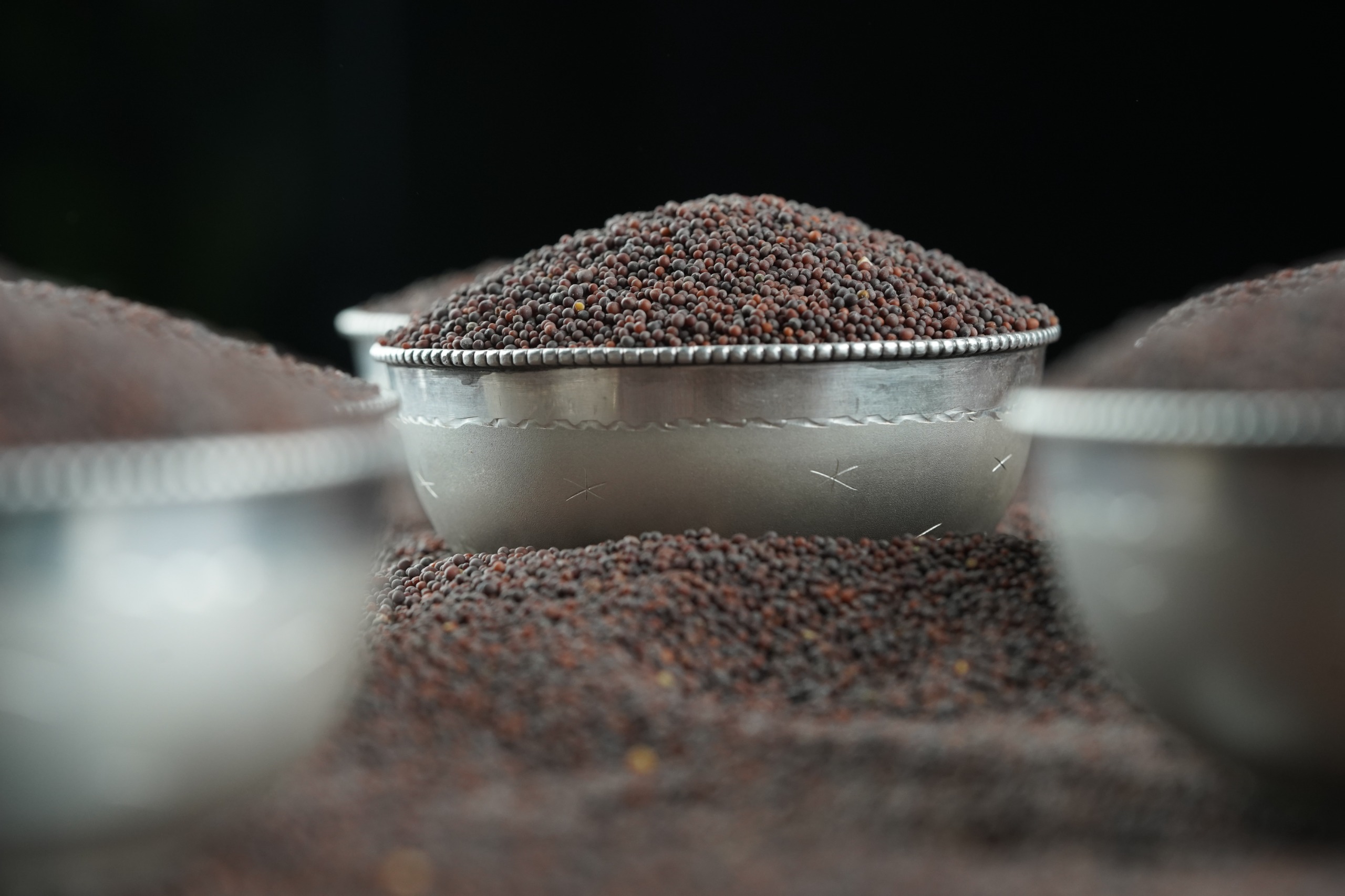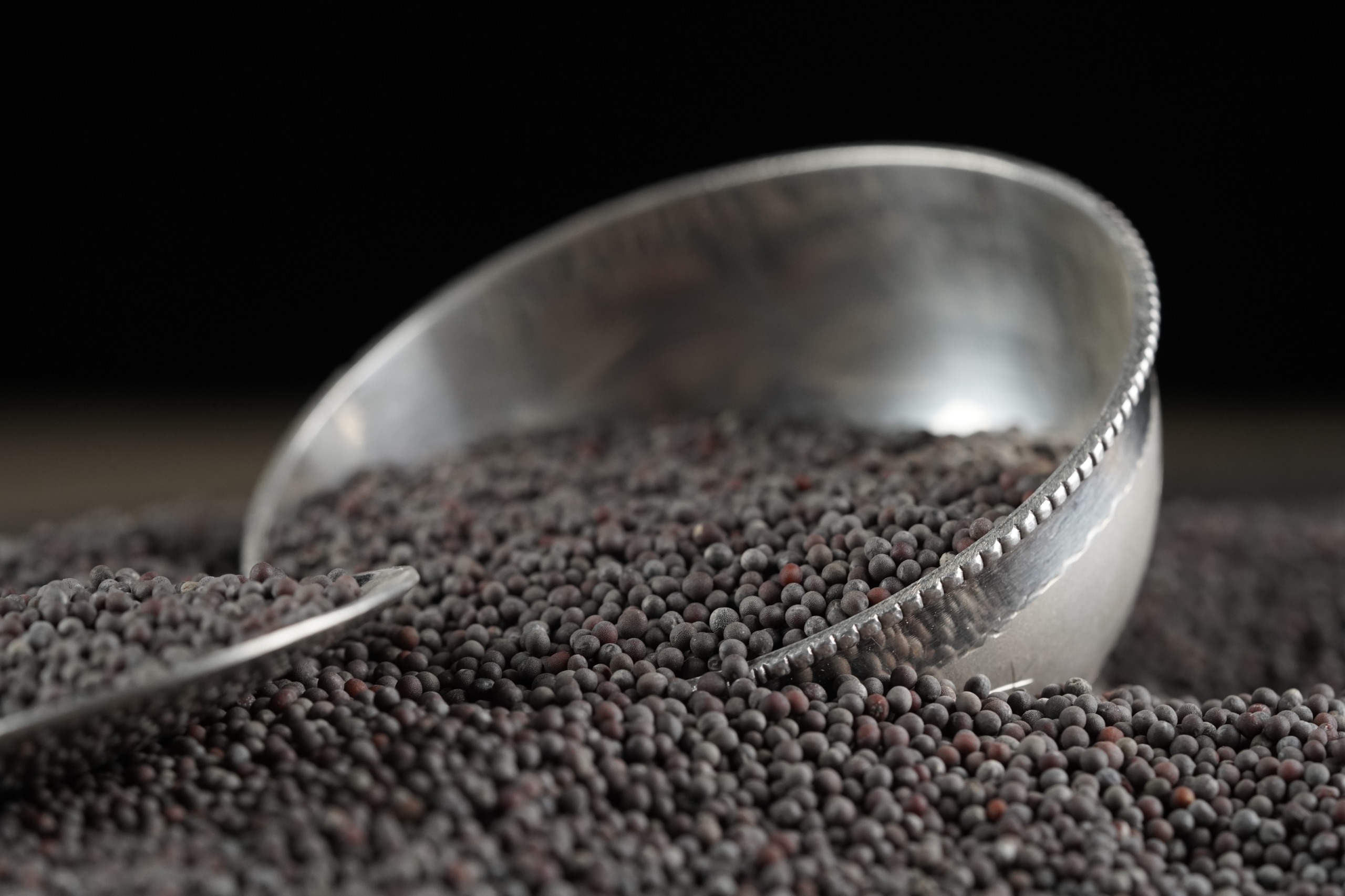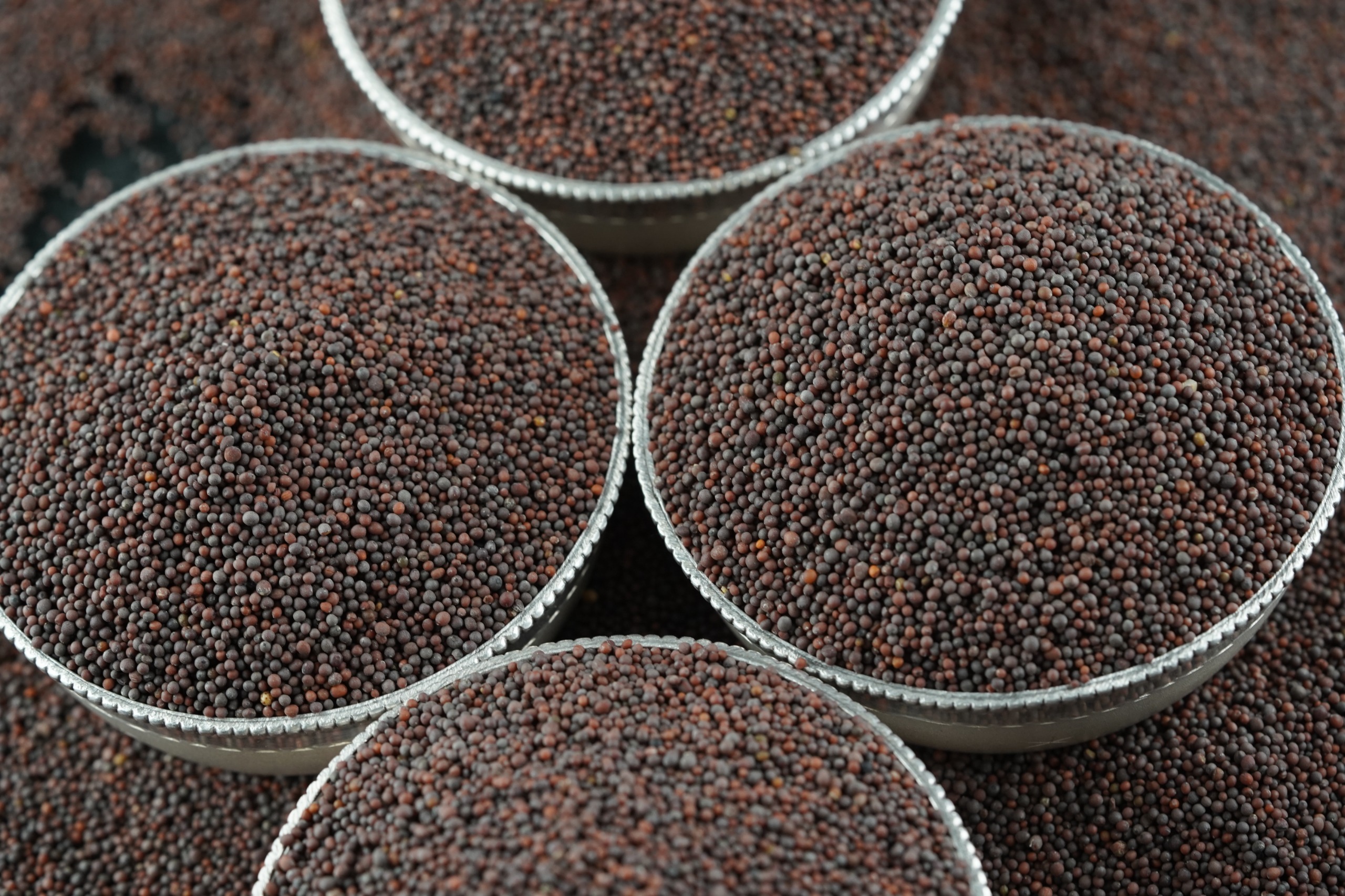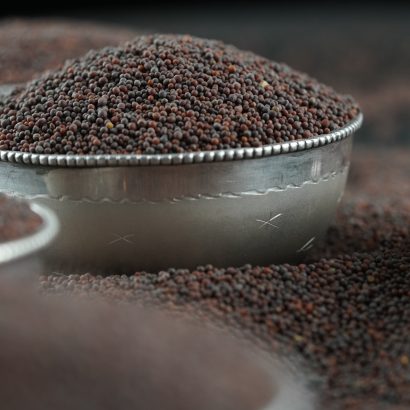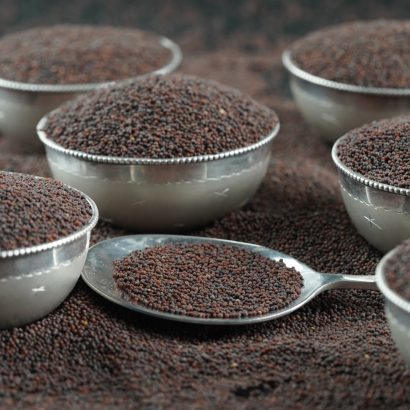Mustard
Mustard is a plant native to temperate regions of Europe, particularly the Mediterranean, and has been cultivated for thousands of years in Europe, Asia, and North Africa. Throughout history, mustard has been used as both a culinary spice and a medicinal herb, with its distinctive flavor and health benefits making it a staple in various cultures. Mustard is a fast-growing, herbaceous annual plant belonging to the Brassicaceae family. The plant typically reaches a height of 1 to 2 meters, depending on the variety. Mustard leaves are large, smooth, and dark green, with deeply lobed margins. The plant produces small, yellow flowers in dense clusters, which later develop into seed pods containing small, round mustard seeds. Mustard thrives in temperate climates and prefers well-drained, fertile soils. It can be grown in a variety of conditions, from full sun to partial shade, making it a versatile crop. Seeds are usually sown in early spring, and the plants reach maturity within 3 to 4 months. The mustard seeds are harvested when the seed pods turn brown and begin to dry. After harvesting, the seeds are separated from the pods through threshing and drying.
Mustard seeds are widely used in cooking, especially in regions that favor bold and pungent flavors. The seeds can be used whole, ground into powder, or processed into mustard paste. Mustard is a key ingredient in various spice blends, including curry powders, and is used to flavor meats, vegetables, and pickles. Whole mustard seeds are often added to soups, stews, and braised dishes for a burst of flavor. In Western cuisine, mustard is essential in the preparation of condiments, salad dressings, and marinades. In Indian cuisine, mustard seeds are commonly tempered in hot oil to release their flavors before being added to dishes. Mustard has also been valued for its medicinal properties, believed to aid digestion, relieve muscle pain, and improve circulation.
Nutritional Values
Moisture: 5.5% Protein: 26.1% Fat: 36.2% Crude Fiber: 12.2% Carbohydrates: 28.4% Mineral Matter: 7.6%.Minerals and Vitamins:
Calcium, Iron, Magnesium, Phosphorus, Potassium, Sodium, Zinc, Vitamin B1 (Thiamine), Vitamin B2 (Riboflavin), Vitamin B3 (Niacin), Vitamin B6, Vitamin C, Vitamin E, Vitamin K.Uses of Mustard Seeds
Mustard seeds are versatile and used in a variety of culinary and medicinal applications:Culinary Uses:
Spiced Foods: Mustard seeds are commonly used in spiced foods such as stews and grills. They add a distinctive tangy flavor to lamb and chicken dishes. Vegetables and Legumes: Small amounts can enhance the flavor of aubergine and kidney bean dishes. Condiments and Dressings: Mustard seeds are essential in making mustard condiments and salad dressings. Indian Cuisine: In Indian cooking, mustard seeds are used in tempering for curries, pickles, and various savory dishes. Pickling: Mustard seeds are frequently used in pickling processes to add flavor and preserve foods. Medicinal Uses: Digestive Health: Mustard seeds are believed to aid digestion and help with nutrient assimilation. Healing: They are also used in traditional medicine for the healing of stitches and pain relief.
PACKAGING OPTIONS:-
We can offer the following packaging options: 1. 30k.g., 40k.g. 50k.g. kg PP Bags or Jute bags 2. Customize as per buyer requirement.| Product Name: | Mustard Seeds (Brassica spp.) |
| Description: | Mustard seeds are small, round seeds with a pungent flavor and aromatic scent. They are used extensively in cooking and pickling for their distinctive taste and culinary versatility. |
| Origin: | Specify the region or country of origin, e.g., India. |
| Variety: | Common varieties include Yellow Mustard, Brown Mustard, and Black Mustard. |
| Quality Grades: | Grade A:- High purity, uniform size, minimal broken seeds. Grade B:- Good purity, slight variation in size, minor broken seeds. |
| Physical Characteristics: | Color:- Varies from yellow to brown to black, depending on the variety. Odor:- Pungent and characteristic. Taste:- Tangy and slightly bitter. Size:- Approximately 1-2 mm in diameter. |
| Chemical Composition: | Moisture Content:- ≤ 5.5% Purity:- ≥ 98% Foreign Matter:- ≤ 2% Total Ash:- ≤ 7% Acid Insoluble Ash:- ≤ 1.5%. |
| Packaging: | Options:- 25 kg, 50 kg, or customized packaging. Material:- PP bags, jute bags, or paper bags. |
| Storage Instructions: | Store in a cool, dry place away from direct sunlight. Shelf life:- Up to 12 months under proper storage conditions. |
| Usage: | Culinary:- Used in spiced foods, pickles, condiments, and dressings. Enhances the flavor of meats, vegetables, and legumes Medicinal:- Known for aiding digestion, nutrient assimilation, and pain relief. |
| Certifications:- | FSSAI:- Compliance with food safety standards. ISO:- If applicable. Organic:- If applicable. |
| Safety Information: | Allergens:- May contain traces of other seeds or nuts. Non-GMO:- If applicable. Harvesting Season:- Typically harvested from July to August. |



